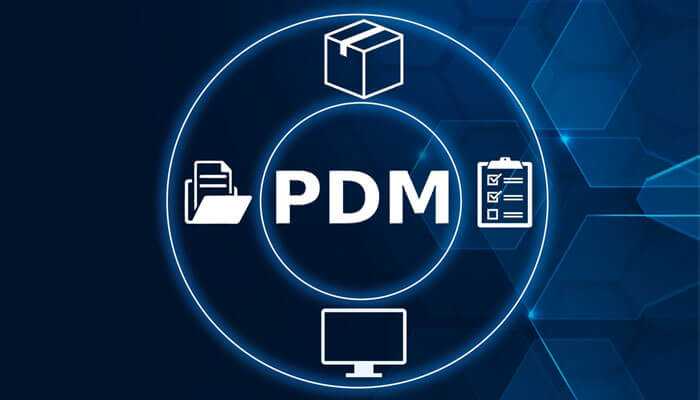In today’s fast-paced business environment, efficient management of product data is paramount for maintaining competitiveness. Product Data Management (PDM) solutions offer a streamlined approach to organizing, controlling, and distributing product information, simplifying complex processes, and eliminating unnecessary complications. With a robust PDM system in place, businesses can ensure accuracy and consistency throughout the entire product lifecycle, facilitating improved collaboration, faster time to market, and increased sales.
Implementing a PDM solution may seem daunting at first, but with the right strategy, the transition can be smooth and rewarding. Embracing PDM means embracing a future where data supports business growth, enables informed decision-making, and fosters a more connected and informed operational landscape.
Key Concepts in Product Data Management
Grasping these core principles of product data management (PDM) will empower you to navigate the complexities of the business data landscape effectively.
The Role of Data in Modern Business
You live in a data-driven age where informed decisions are key to your business success. Data acts as the foundation on which your business intelligence is built, enabling you to identify trends, make predictions, and tailor your strategies to meet consumer demands. Its role cannot be understated; effective data management often signifies the difference between lagging behind and leading the market.
Overview of Product Data Management
Product Data Management is the use of software and other tools to track and control data related to a particular product. The data tracked usually involves product design details, manufacture process information, and other items essential for effective product lifecycle management (PLM). Hence, PDM becomes a crucial subset of PLM, focused on managing:
1. Design Specifications: Including CAD files and their associated documents.
2. Material Data: Everything from raw materials required to components used in production.
3. Process Guidelines: Outlining steps for manufacturing or assembly to maintain consistency and quality.
Benefits of Streamlined Data Processes
Streamlining your product data processes can lead to increased efficiency and error reduction. When information is centralized and accessible, your teams can:
• Reduce time spent searching for product data.
• Enhance collaboration by allowing all stakeholders to remain on the same page.
• Improve product quality by ensuring consistency in design and production.
• Facilitate compliance with industry standards by maintaining accurate, traceable records.
Clear and organized data processes enable you to be more agile and responsive to market changes or internal shifts, placing you at a competitive advantage.
Choosing the Right PDM Solution
Selecting the right product data management solution is crucial in tying together all the elements of your product life cycle, ensuring streamlined workflow and secure data accessibility.
Assessing Business Needs
Analyzing your business demands is the first and most important step. You must consider:
• Company size: Small, medium, or large?
• Project complexity: How intricate are your projects?
• Data volume: How much data do you need to manage?
• User roles: Who will use the PDM system? Engineers, designers, suppliers?
Comparing PDM Software Features
When you’re comparing PDM systems, focus on:
• File management: Look for secure check-in/check-out and version control.
• Design collaboration: Can users collaborate without overwriting work?
• Search and retrieval: Ensure the system offers advanced search features.
• Automation capabilities: Will it automate workflows and routine tasks?
Integration with Existing Systems
Integration ensures a seamless workflow. Check if the PDM solution:
• Is compatible with current software (CAD, ERP, etc.)
• Supports data migration from your existing systems
• Allows scalability to grow with your business needs
Vendor Selection Criteria
Carefully evaluate vendors based on:
• Experience and reputation in your industry
• Customer support and training offerings
• Update and maintenance policies
Remember, the right PDM solution should make your business more efficient—not the other way around.
Implementing a PDM System
When implementing a PDM system, it’s crucial to plan strategically, anticipate possible hurdles, and ensure that your team is well-trained for smooth adoption.
Strategic Planning for Implementation
First, outline your goals. Know what you want to achieve with your PDM system. Do you aim to reduce time spent searching for data, ensure compliance, or streamline collaboration? Your goals will shape your implementation strategy.
• Define Scope and Objectives: Clearly delineate what data and processes the PDM will manage.
• Identify Stakeholders: List all parties affected and their roles. Ensure their needs are considered.
• Select the Right PDM Solution: Match your objectives with the features offered by various PDM systems.
• Develop an Implementation Plan: This should include timelines, resource allocation, and milestones.
• Data Migration Plan: Decide how existing data will be transferred to the new system and ensure data integrity is maintained.
Overcoming Common Challenges
Challenges are inevitable, but with a heads-up, you can tackle them effectively.
• Data Compatibility: Ensure your existing data is compatible with the new PDM. This might involve data cleansing or format conversions.
• Integration with Existing Systems: PDM should complement, not complicate, your current software ecosystem. Plan for seamless integration.
• Change Resistance: Change can be tough. Communicate the benefits of the PDM system to all stakeholders to get their buy-in.
Training and User Adoption
Training isn’t just a one-off task; it’s an ongoing process to keep your team savvy and efficient.
• Role-Specific Training: Tailor training sessions to the different roles in your team to ensure relevance.
• Provide Support and Resources: Make guides, FAQs, and help desks available to resolve doubts quickly.
Remember, the most effective PDM system is the one that your team actually uses and benefits from, so keep their needs and your business goals in mind through every step of the process.
Future Trends in Product Data Management
Product Data Management (PDM) solutions are evolving rapidly to meet your business needs. In the near future, you can expect PDM systems to leverage Artificial Intelligence (AI) and Machine Learning (ML) to improve product lifecycle management by predicting market trends and customer needs.
• AI-Powered Analytics:
Your PDM tools will become smarter, using AI to analyze product data for insights, leading to informed decision-making.
• Cloud- Based Platforms:
Cloud services will dominate, providing you with scalable storage and accessibility from anywhere, with enhanced security protocols keeping your data safe.
• Integration with IoT:
As Internet of Things (IoT) devices proliferate, PDM systems will seamlessly integrate with IoT, offering real-time data from product usage.
• Customization and Flexibility:
PDM solutions will offer greater customization options, suiting your unique business processes and industry requirements.
• Sustainability Tracking:
With a global push towards sustainability, PDM tools will include features to help you monitor and manage the environmental impact of your products.
These advancements in PDM systems are all about making your life easier and your business more efficient. Stay tuned; as technologies emerge and improve, so too will your ability to manage product data effectively.
Conclusion
Mastering Product Data Management (PDM) solutions is pivotal for modern businesses striving to maintain competitiveness in a fast-paced environment. By implementing robust PDM systems, companies can streamline operations, enhance collaboration, and accelerate time to market, ultimately driving increased sales. While the transition to PDM may seem daunting, embracing these solutions paves the way for a future where data supports business growth and fosters a more connected operational landscape. As PDM solutions continue to evolve, leveraging advancements such as AI, cloud-based platforms, and IoT integration promises to further enhance efficiency and effectiveness in managing product data, ensuring businesses remain agile and ahead of the curve in meeting evolving market demands.



